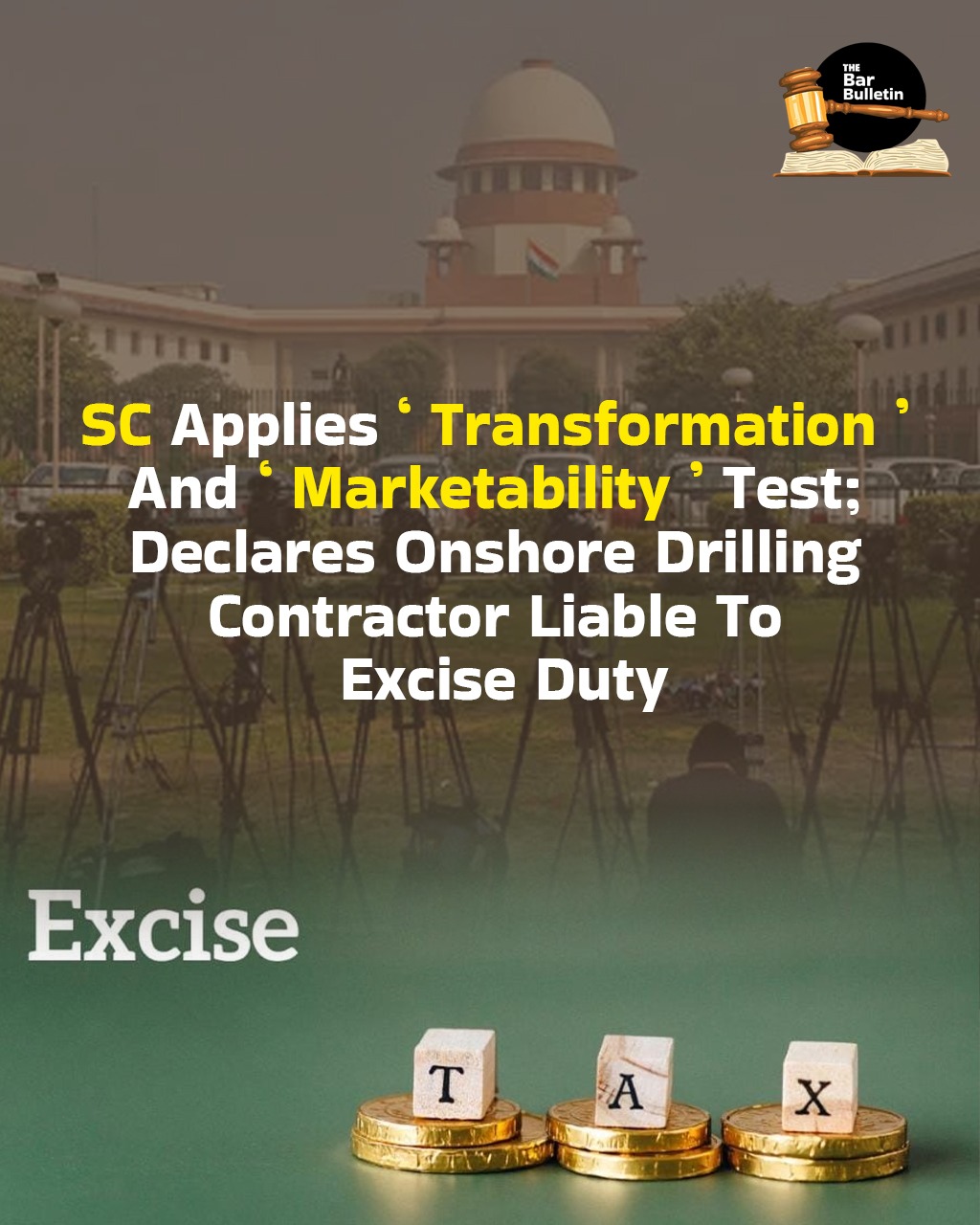Observing that both the ‘transformation test’ and the ‘marketability test’ stand fulfilled, the Supreme Court ruled that the process of placing the Genset within the steel container and fitting that container with additional, integral components brings into existence a new, distinct, and marketable commodity, which would amount to “manufacture” under Section 2(f)(i) of the Central excise Act, 1944. Consequently, the Apex Court held the appellant (onshore drilling contractor) liable to pay excise duty on the goods manufactured by it.
The Two-Judge Bench comprising Justice J.B. Pardiwala and Justice K.V. Viswanathan observed that the change in the form/structure and the addition of new components to the imported Genset have transformed it and brought into existence a different product, i.e., the Power Pack, which has its own distinct character and identity. The Bench also explained that determining the ‘character’ and ‘identity’ of goods is an inherently fact-specific inquiry, necessitating assessment on a case-by-case basis. Given the vast diversity of products and manufacturing processes, it is impossible to lay down a universal definition for these terms.
The Bench was convinced that the steel container and the other additional components do transform the imported Genset and bring into existence a distinct product which has its own character and identity. On a preliminary analysis itself, it is amply evident that the constituent components of the imported Genset are very different from the constituent components of the Power Pack. Applying the judicial understanding of ‘parts’ and ‘accessories’ to the facts of the present case, the Bench explained that the additional components should be considered as ‘parts’ of the Power Pack.
Speaking for the Bench, Justice Pardiwala pointed out that the appellant itself has admitted to the fact that once the Genset is placed in the steel container, these additional components, such as the radiator, ventilator fan, and air filter unit, are required for its effective functioning. However, the appellant argued that these components do not have a direct role in generating the electricity. Rejecting such an argument, the Bench clarified that even if that be the case, it cannot be denied that these components play an equally vital role in facilitating such generation of electricity.
The Bench also explained that it would be safe to assume that without these additional components, the Power Pack would not produce electricity within the steel container and thereby be able to fulfil its primary function. Thus, these additional components are not mere ‘accessories’ attached for the sake of convenience. The Bench also rejected the appellant’s submission that the Genset was complete and functional at the time of import, and the end-use of both the imported Genset and the Power Pack is the same, i.e., generation of electricity.
The Bench emphasized that the contention of the appellant that the end-use of both products is merely the ‘generation of electricity’ is an oversimplification that conflates the core function of a product with its functional utility. The Genset at the time of the import was in a form that was suitable/intended for permanent installation. The process undertaken by the appellant imparts the core functional utility of portability to the Genset, a utility that was non-existent in the product at the time of its import. This is not a minor, value-added feature; rather, it is the defining attribute from which the final product derives its entire identity and character.
Briefly, in this case, the appellant is in the business of providing containerized gas generating sets (Power Packs) on a lease basis and imports Gas Generating Sets (Gensets), which consist of an engine (prime mover) coupled with an alternator on a common base frame, along with standard accessories and an electronic management system, classified under sub-heading 8502.2090 of the Customs Tariff Act, 1975 at the time of import. Since the Gensets are leased and frequently relocated to new customers’ premises, the appellant decided it was impractical to install them permanently, and so they were placed in steel containers for ease of transportation. In addition, the appellant procured components like radiators, oil tanks, fans, and piping, and carried out a detailed assembly process within the container, including mounting, piping, and testing, to ensure the Genset’s functionality.
After inspection by Central Excise officers, the Assistant Commissioner concluded that the activities amounted to manufacture, which culminated in the issuance of Show Cause Notices proposing the demand of duty, interest, and penalties. After adjudication, the demand and penalties were confirmed. When the matter reached the CESTAT, it found that the process undertaken by the appellant amounted to manufacture, reasoning that the Power Packs, being distinct from the imported Gensets, had different names, characters, and uses in trade, and the activities led to the creation of a new product capable of being marketed. Moreover, the Gensets were incomplete machines that required assembly to become functional, and this assembly process fell within the definition of manufacture under Section 2(f) of the 1944 Act, as well as under Note 6 of Section XVI of the Act, 1985, which covers the conversion of incomplete goods into finished products. The CESTAT thus upheld the duty demand and interest for the normal period, while setting aside the penalties and confiscation for the extended period, and directed the adjudicating authority to extend the CENVAT Credit benefit to the appellant, subject to verification.
Appearances:
Senior Advocate S K Bagaria, along with Advocates Aditya Bhattacharya, L Charnaya, and M P Devanath, for the Appellant/ Taxpayer
NA, for the Respondent/ Revenue

